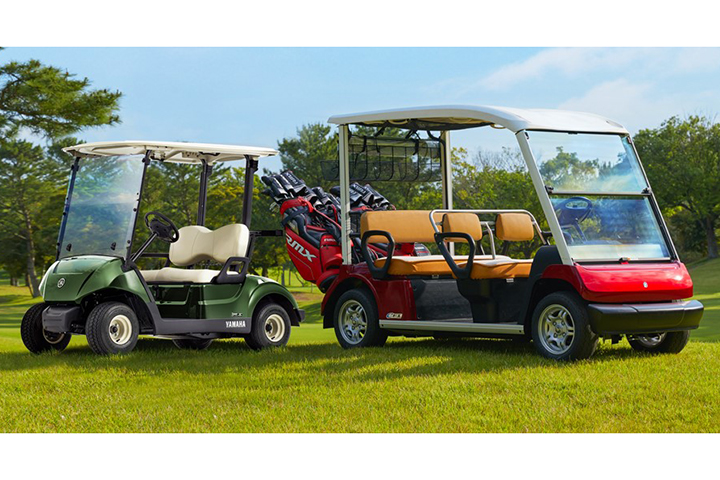
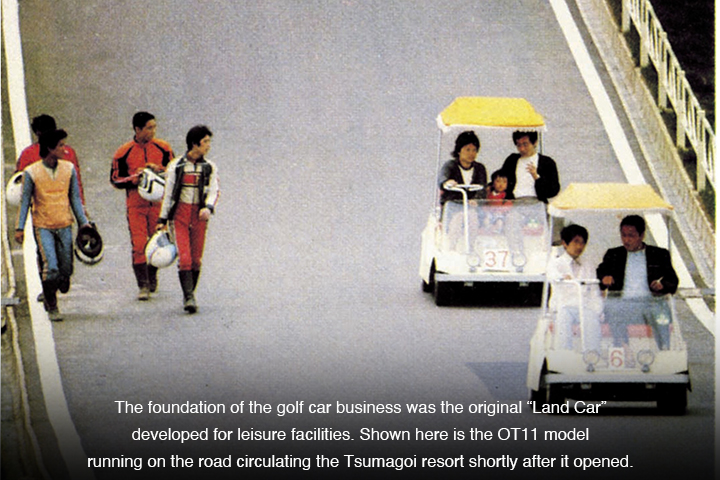
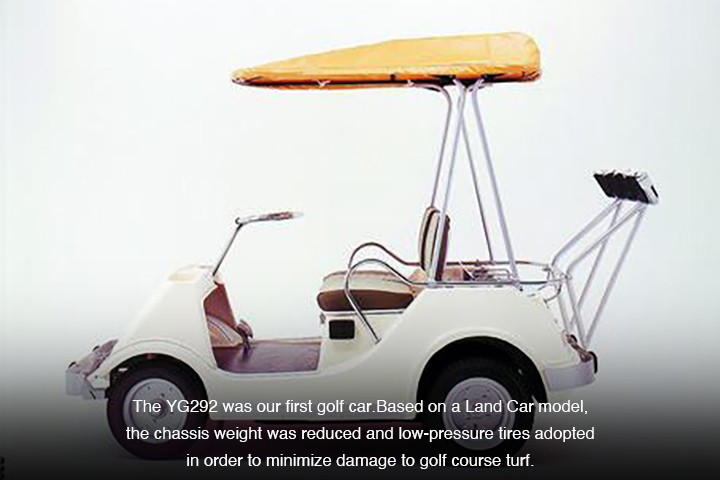
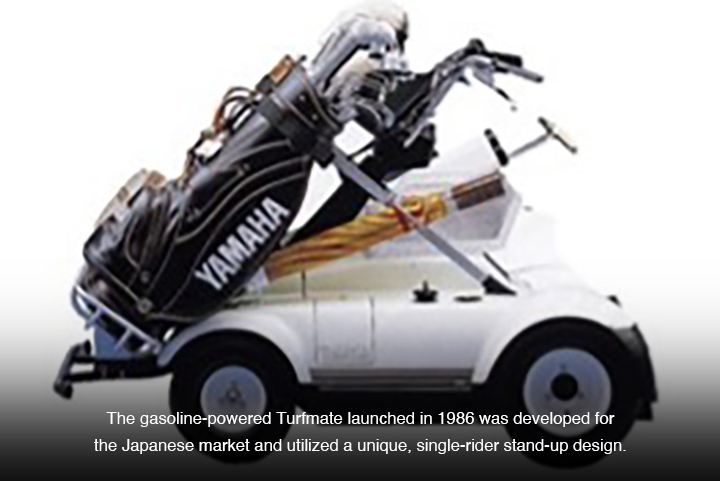
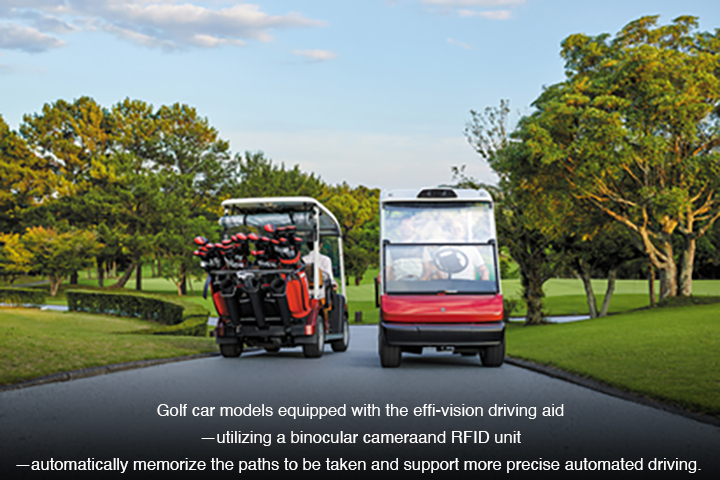

50 Years of Yamaha Golf Cars
and the Future Ahead
Over 1 Million Units Produced Since Starting in 1975
to Diversify Yamaha’s Business Portfolio
Yamaha Motor is involved in a wide range of businesses, from motorcycles and marine products to eBikes and industrial robots. Founded in 1955, the company took a unique path to growth by repeatedly innovating in-house and spawning spin-offs that resulted in a multi-axial business structure. Among the many businesses that emerged in the 1970s, one of the most representative is the golf car. This month’s issue casts the spotlight on this business celebrating its 50th anniversary this year.
Born from Combining Technological Assets from Other Businesses
It was 50 years ago in June 1975 that Yamaha Motor developed and launched its first golf car—the YG292. Based on the Land Car created for leisure facilities that was launched the previous year, the YG292 (the “292” indicated its engine displacement) was specialized for use on golf courses and effectively kickstarted Yamaha Motor’s golf car business.
That big first step was made by combining technologies and resources accrued across various businesses, i.e., using the highly reliable 5-port, air-cooled, 2-stroke 292cc engine from our snowmobiles at the time, the base chassis/engine package from developing the Land Car, and designing the fiber-reinforced plastic bodywork leveraging expertise from building boat hulls and swimming pools.
At the time, North America and Japan were envisioned as the primary markets for the YG292, and while there were already well-established brands in both markets, research indicated that the product appeal and services of the leading manufacturer in North America was lacking and that the growing population of golfers in Japan had led to many new golf courses being planned for opening. This led to the decision that, even as a latecomer, Yamaha Motor had plenty of room to compete.
Celebrating a 50th Anniversary and Further Possibilities for Growth
In the same way the golf car business began by combining technologies and expertise refined in other businesses, the golf car business itself has in turn influenced other Yamaha Motor businesses and products throughout its 50-year history.
One example of this is electrification. Golf cars must be clean as well as quiet, so they were among the earliest Yamaha mobility products we began working to electrify. Additionally, golf cars made significant contributions to Yamaha Motor’s experience with automated driving technology, such as the development of an electromagnetic-guided model operable by remote control in 1993 or the effi-vision driving support feature with auto-logging for drive paths in 2018.
But what is now drawing the most attention in Japan as a result of adapting technologies from our Land Cars and golf cars are Green Slow Mobility projects, which use electric versions of our golf cars retooled for use on public roads. In order to supplement public transportation systems in areas with insufficient coverage as well as to provide short-distance travel options in tourist destinations, real-world testing and implementation of Green Slow Mobility is spreading throughout Japan. As one example, vehicles prepared by Yamaha are being used for running Japan’s first Level 4 automated driving service, which began in May 2023.
Meanwhile, the market itself is also growing; in addition to the mainstay North American and Japanese markets, Yamaha golf cars are now being introduced to Europe, Australia, and various countries in Asia, and are currently manufactured in Japan and the United States.
Yamaha Motor’s golf cars today are clean, quiet, open-air, and able to seat multiple passengers, and with features for automated driving and driver aids, their possibilities continue to grow even as the business marks its 50th anniversary this year.
YAMAHA GOLF CAR (US)
https://www.yamahagolfcar.com/
Message from the Editor
In recent years, golf courses have been working to address the issues presented by a decreasing workforce and various other problems by reducing needed labor, transitioning to self-service means, and reducing the workload on caddies. Golf cars have evolved while constantly meeting these needs, gaining enhanced functions and performance while breaking into new fields of use.
Over the last few years, low-speed mobility has been drawing attention and we are seeing more product categories and uses emerge, from personal transportation vehicles (PTVs) to low-speed vehicles (LSVs). Yamaha Motor is planning to expand its Low-Speed Mobility business by developing a versatile platform leveraging the technologies it has honed over the golf car business’ 50 years of operation.
MATSUO Kaoru, PR Group, Corporate Communication Division (YMC)